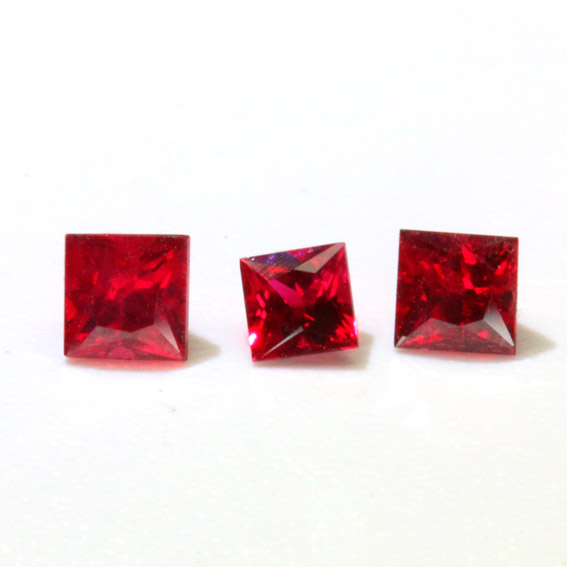Introduction
Sapphires and rubies are two of the most coveted gemstones renowned for their beauty, durability, and rich symbolism. While they share a common mineral composition and belong to the corundum family, sapphires and rubies are distinct gemstones with unique characteristics. In this article, we will explore the question of whether sapphires and rubies are the same. We will delve into their color variations, chemical composition, geographical origins, historical significance, and cultural associations. By examining the similarities and differences between sapphires and rubies, we will unravel the fascinating world of these precious gemstones.
1. Color Variations
______________________________________________________________________
One of the primary distinctions between sapphires and rubies lies in their color variations:
a. Sapphires:
Sapphires are typically associated with shades of blue, ranging from pale sky blue to intense royal blue. However, sapphires can also occur in other colors such as pink, yellow, green, orange, and purple. These colored sapphires are known as fancy sapphires, with each hue possessing its unique allure.
b. Rubies:
Rubies are renowned for their vibrant red color, which is caused by the presence of chromium in their chemical composition. The most valuable rubies exhibit a deep red hue with a slight hint of blue, often referred to as “pigeon’s blood” red. While rubies are primarily associated with red, they can also occur in shades of pink and purplish-red.
2. Chemical Composition
______________________________________________________________________
Sapphires and rubies share the same chemical composition, both belonging to the corundum family, which consists of aluminum oxide (Al2O3). However, it is the presence of trace elements that gives each gemstone its distinct color:
a. Sapphires:
Blue sapphires derive their color from the presence of iron and titanium impurities within the crystal lattice. Other colored sapphires, such as pink or yellow, result from trace elements like chromium, iron, or vanadium. The specific combination and concentration of these impurities determine the color variation within the sapphire family.
b. Rubies:
Rubies owe their striking red color to the presence of chromium. The chromium atoms replace some of the aluminum atoms within the crystal structure of corundum, causing the red hue. The presence of other trace elements, such as iron and titanium, can influence the secondary colors and overall intensity of the ruby.
3. Geographical Origins
______________________________________________________________________
The geographical origins of sapphires and rubies vary, contributing to their unique characteristics and desirability:
a. Sapphires:
Sapphires are found in various parts of the world, with notable sources including Sri Lanka, Madagascar, Myanmar (Burma), Australia, Thailand, and Montana (USA). Each region produces sapphires with distinct color variations and quality characteristics. For example, sapphires from Kashmir are renowned for their velvety blue hue, while those from Sri Lanka often exhibit a lighter and more vibrant color.
b. Rubies:
Historically, the most renowned sources of rubies include Myanmar (Burma), Thailand, and Sri Lanka. Burmese rubies, particularly those from the Mogok region, have long been regarded as the epitome of quality and beauty due to their intense red color and exceptional clarity. Other significant sources of rubies include Mozambique, Madagascar, Afghanistan, and Vietnam. Each region contributes unique nuances to the characteristics of the rubies found there.
4. Historical Significance and Cultural Associations 
______________________________________________________________________
Both sapphires and rubies have captivated civilizations throughout history, possessing cultural and symbolic significance:
a. Sapphires:
Sapphires have been treasured for centuries and hold significant historical and cultural value. In ancient times, sapphires were associated with wisdom, nobility, and divine favor. They were believed to protect wearers from harm and bring spiritual enlightenment. Sapphires have been featured in royal jewelry and have adorned the robes of religious leaders, symbolizing power, virtue, and holiness.
b. Rubies:
Rubies have a rich history steeped in legends and folklore. They have been associated with passion, vitality, and courage. Ancient cultures revered rubies as tokens of protection and believed they possessed the power to ward off evil. Rubies were often worn by warriors going into battle, as they were thought to bring strength and invincibility. In many cultures, rubies symbolize love, devotion, and prosperity.
5. Conclusion
______________________________________________________________________
While sapphires and rubies share a common mineral composition and belong to the corundum family, they are distinct gemstones with unique characteristics. Sapphires encompass a broad spectrum of colorsand are often associated with blue, but can also occur in a range of other hues. Rubies, on the other hand, are renowned for their vibrant red color. The chemical composition and trace elements present in each gemstone contribute to their distinct colors. Furthermore, the geographical origins of sapphires and rubies vary, influencing their quality and characteristics. Both gemstones hold historical significance and cultural associations, with sapphires symbolizing wisdom and nobility, while rubies represent passion and courage. Understanding the differences and similarities between sapphires and rubies enhances our appreciation for these exquisite gemstones and the stories they carry.
Post time: Aug-23-2023
